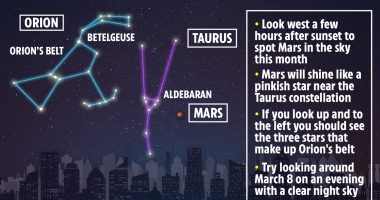A GIGANTIC asteroid is set to zip past Earth this week, according to Nasa space debris trackers.
The rock is travelling at over 56,000 mph (90,000 kph) and at up to 820 metres (2,690ft) long is bigger than the Burj Khalifa in Dubai – the world’s tallest building.
According to Nasa’s near Earth object tracker, the asteroid, called 2000 WO107, will perform its nerve-shredding flyby on Sunday.
Luckily, it’s not expected to hit our planet, passing at a safe distance of 2.6million miles (4.2million km).
That’s about 11 times the distance between Earth and the Moon, which may sound like a fair gap but is actually pretty close in space terms.
Nasa classes anything that passes within 120million miles of our planet a “Near Earth Object” (NEO).
The space agency tracks thousands of them all year round to ensure they doesn’t pose a threat to humanity.
This particular space rock was discovered by astronomers in New Mexico on November 29, 2000, and Nasa has been tracking it ever since.
The asteroid is expected to make its close approach at around 10:09am GMT on November 29.
That means the flyby falls on the twentieth anniversary of WO107’s discovery.
Astronomers are currently tracking more than 2,000 asteroids, comets and other space objects near Earth, and new ones are found every day.
Our planet hasn’t seen an asteroid of apocalyptic scale since the space rock that wiped out the dinosaurs 66million years ago.
However, smaller objects capable of flattening an entire city crash into Earth every so often.
What’s the difference between an asteroid, meteor and comet?
- Asteroid: An asteroid is a small rocky body that orbits the Sun. Most are found in the asteroid belt (between Mars and Jupiter) but they can be found anywhere (including in a path that can impact Earth)
- Meteoroid: When two asteroids hit each other, the small chunks that break off are called meteoroids
- Meteor: If a meteoroid enters the Earth’s atmosphere, it begins to vapourise and then becomes a meteor. On Earth, it’ll look like a streak of light in the sky, because the rock is burning up
- Meteorite: If a meteoroid doesn’t vapourise completely and survives the trip through Earth’s atmosphere, it can land on the Earth. At that point, it becomes a meteorite
- Comet: Like asteroids, a comet orbits the Sun. However rather than being made mostly of rock, a comet contains lots of ice and gas, which can result in amazing tails forming behind them (thanks to the ice and dust vapourising)
One a few hundred metres across devastated 800 square miles of forest near Tunguska in Siberia on June 30, 1908.
Luckily, Nasa doesn’t believe any of the NEOs it keeps an eye on are on a collision course with our planet.
That could change in the coming months or years, however, as the space agency constantly revises its predictions of their trajectories.
“Nasa knows of no asteroid or comet currently on a collision course with Earth, so the probability of a major collision is quite small,” Nasa says.
“In fact, as best as we can tell, no large object is likely to strike the Earth any time in the next several hundred years.”
Even if they were to hit our planet, the vast majority of asteroids would not wipe out life as we know it.
“Global catastrophes” are only triggered when objects larger than 900 metres smash into Earth, according to Nasa.
In other news, a huge asteroid dubbed the “God of Chaos” could hit Earth within the next 50 years, according to scientists.
It recently emerged that an asteroid obliterated early human civilisations in a catastrophic collision with Earth 13,000 years ago.
And, scientists have discovered a “Super-Earth” 31 light-years away that humans could one day colonise.
Are you worried about asteroid strikes? Let us know in the comments!
We pay for your stories! Do you have a story for The Sun Online Tech & Science team? Email us at [email protected]
This post first appeared on Thesun.co.uk

















